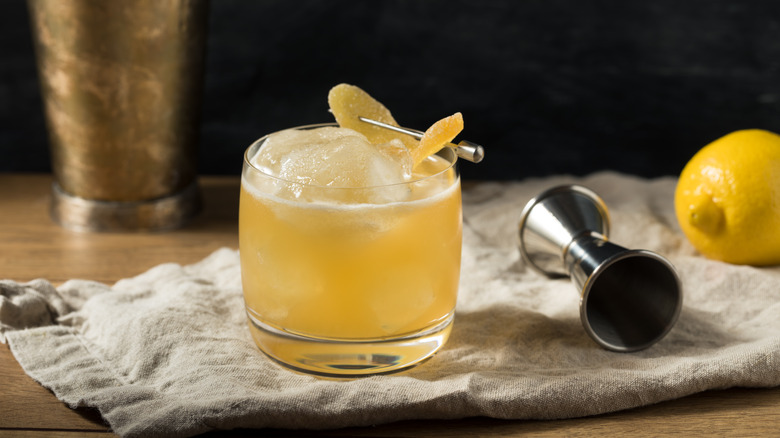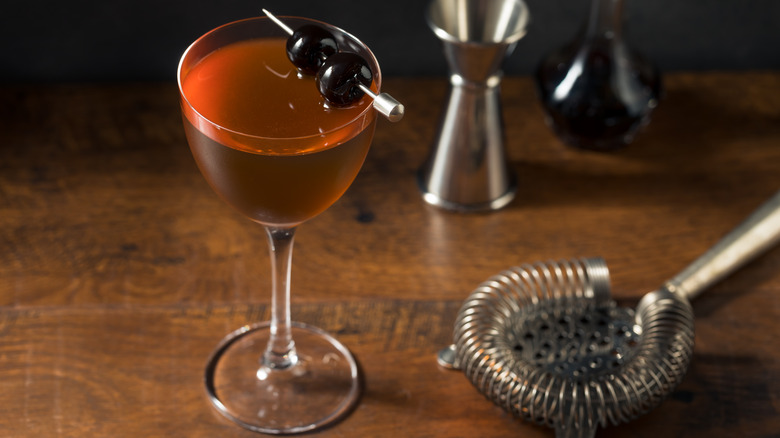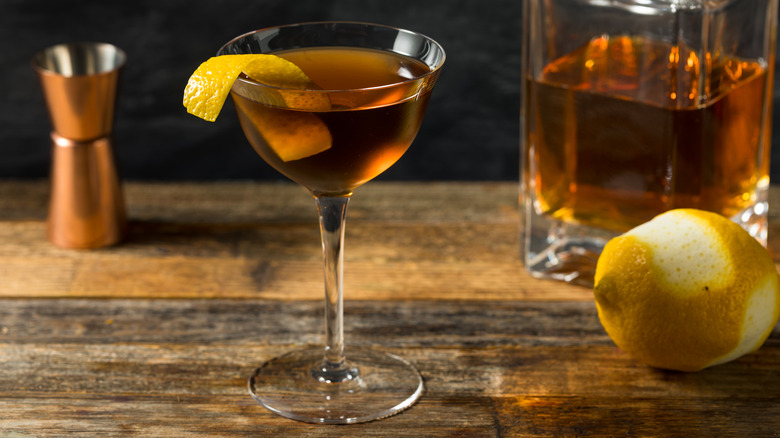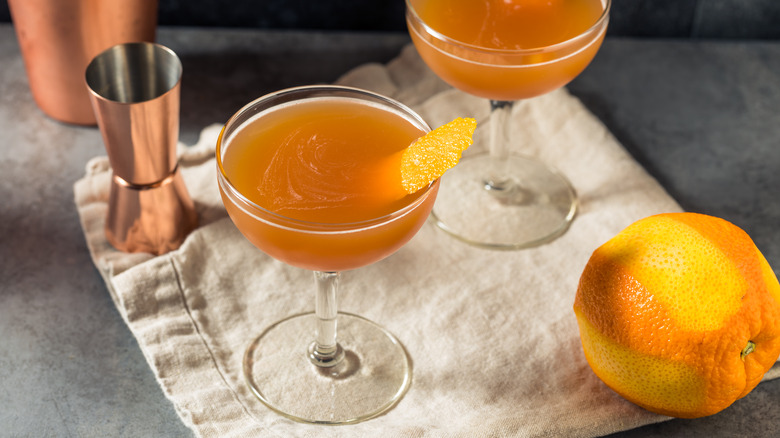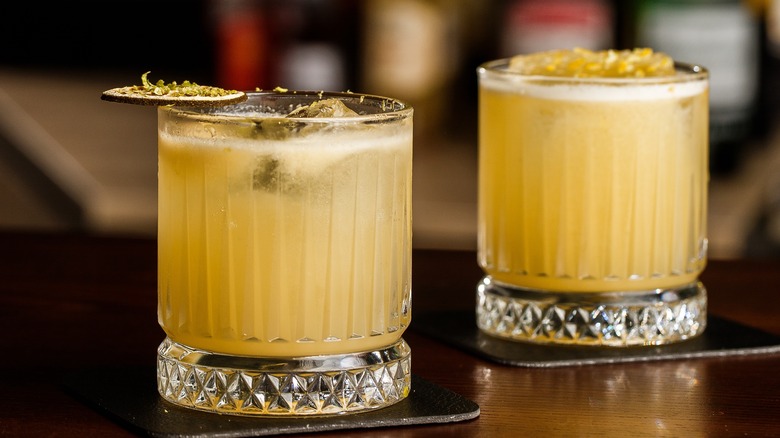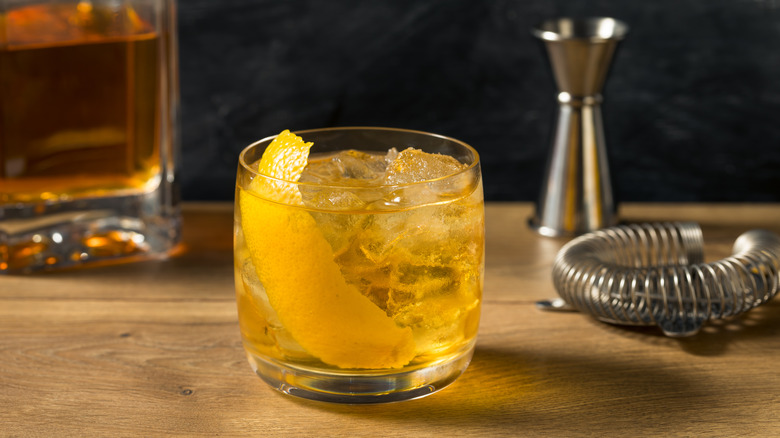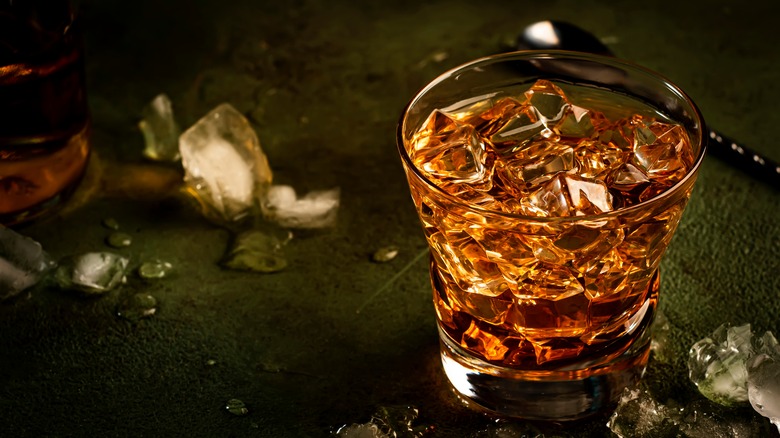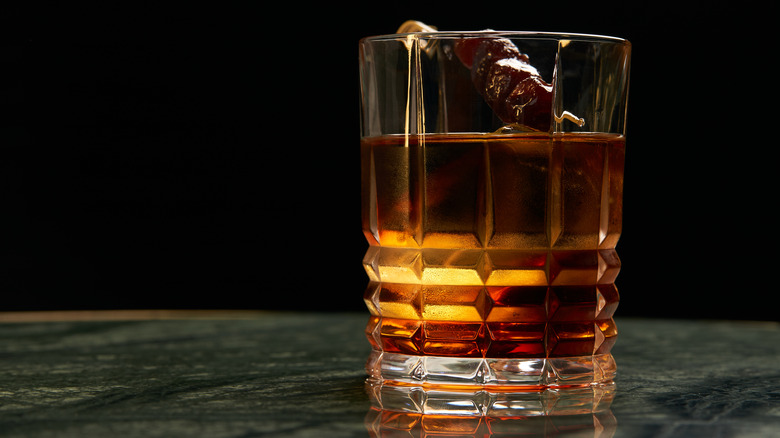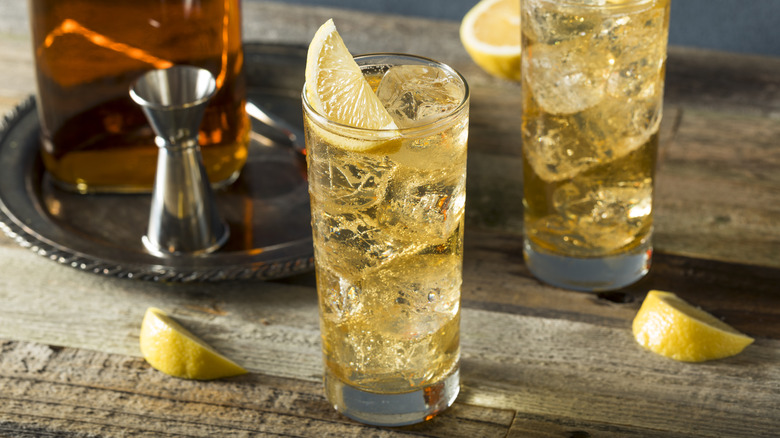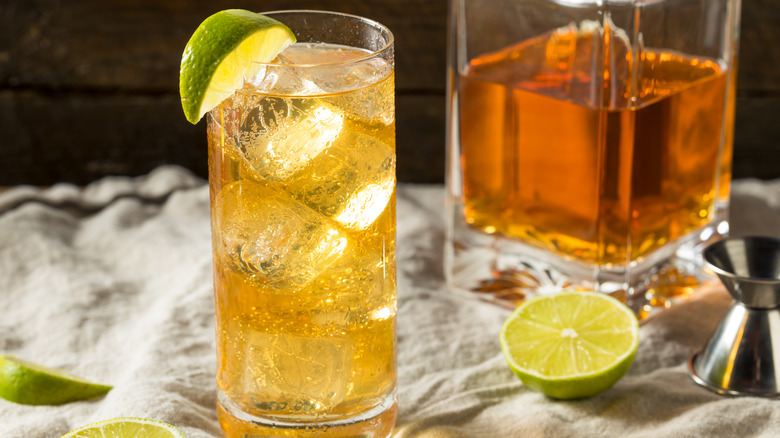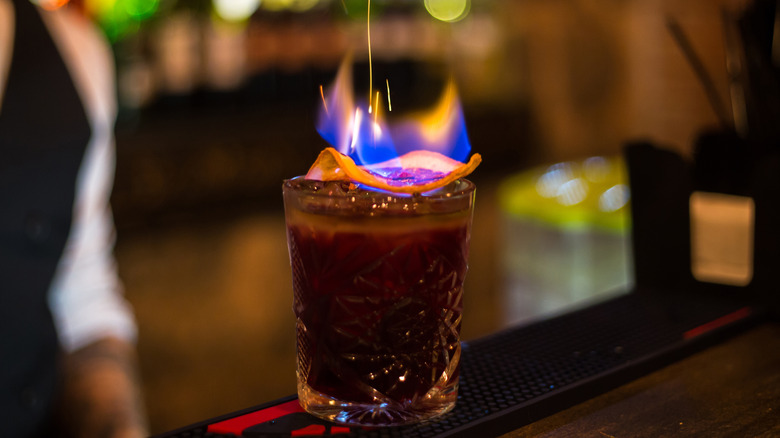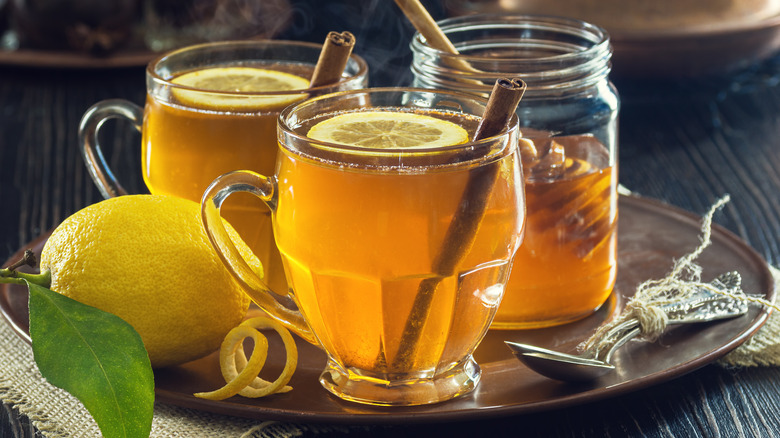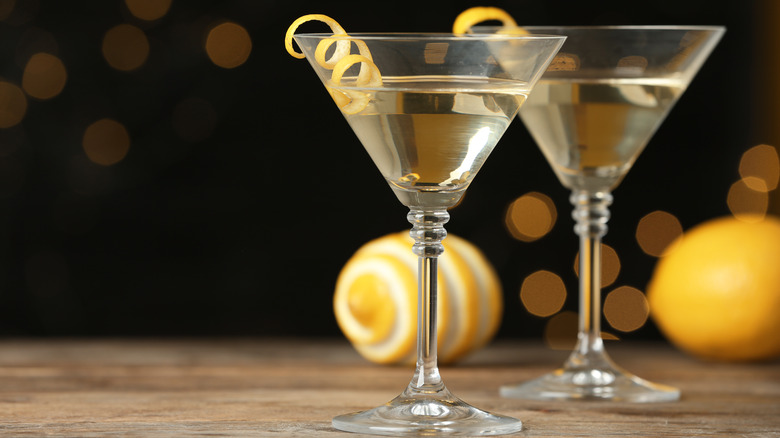The 12 Absolute Best Scotch Whisky Cocktails
Scotch whisky is a revered spirit that many purists believe should only be enjoyed neat, and maybe on the rocks. No matter how classic, involved, or exciting a cocktail is, there are few ways better to enjoy a drink than simply sipping on a quality scotch. There are countless quality bottles out there, many of which will require more of a monetary investment than other spirits, and using an expensive bottle of scotch to mix a cocktail understandably may not be the best use of it.
However, there are many scotch cocktails worth trying, some of which are all-time greats and some that have emerged as instant classics of the modern cocktail boom. Luckily, the scotch you mix into one of them requires no break of the bank. Most of them call for any inexpensive blended scotch, and the ones that call for a more specific style only do so in tiny amounts. If you believe that scotch is only for sipping straight, think again. The following will most certainly change your mind.
Rob Roy
If you like Manhattans, then you have to try the Rob Roy. The simple substitution of American whiskey for scotch makes for more depth and is the most classic scotch cocktail there is. It was invented in 1884 at the Waldorf-Astoria Hotel in New York City, according to Gunther Toddy's Diner. As a musical based on the life of Scottish rebel Robert Roy MacGregor was set to open in a theatre close to the bar, a new drink was created to commemorate it. Although the new drink was a very straightforward and effortless riff on what was already a classic, the Rob Roy became a classic cocktail in its own right and sustains today as such.
Rob Roys are typically made with a neutral and uncomplex blended scotch, but the cocktail can be made with whatever type of scotch you prefer. For example, an Islay scotch will bring that more pronounced peat and smokiness to be countered by the sweet vermouth, as opposed to the spice of a rye whiskey. A Speyside scotch, on the other hand, would be a softer cocktail where the herbal notes of the vermouth play very well with the vanilla notes of the scotch. The choice is yours, and if you already have a decent home bar, nothing should stop you from trying this classic sometime soon.
Bobby Burns
Consequently, if you find that you like a Rob Roy, then you have to try a Bobby Burns. This riff on the riff was first published in Harry Craddock's legendary Savoy Cocktail Book in 1930 and is named after another revered Scotsman, according to Difford's Guide. The cocktail quickly became the drink of choice to celebrate Burns Night, which is a celebration of what's believed to be the poet's birthday on January 25th.
The difference between the Rob Roy and the Bobby Burns is that the Bobby Burns includes the addition of a small amount of Benedictine. Although most recipes for the cocktail only call for a few dashes of the liqueur, they go a long way toward a delicious cocktail that is nuanced and distinct from its predecessor.
Benedictine is made from a combination of 27 herbs and spices infused into a neutral spirit that is sweetened with honey, per Liquor.com. The French liqueur is far more potent than sweet vermouth, but the skewed ratio between the two makes up for the difference, which works in harmony to balance out the scotch whisky in a Bobby Burns. Again, you probably already have the ingredients for this cocktail sitting on your home bar, so trying this classic cocktail is only a quick mix away.
Blood and Sand
The Blood and Sand is another classic cocktail but is one of the more controversial or disputed drinks on this list. This equal-part combination of scotch, Cherry Heering, sweet vermouth, and orange juice is one that has been widely reinvented and refined since its invention in London in 1922 to commemorate a film of the same name, according to Punch.
Equal-parts cocktails are usually a thing to behold, every ingredient working in tandem to create something greater than the sum of its parts. The problem with the Blood and Sand is that many believe it just does not work as an equal parts drink. The spirits balance out one another almost too well, leaving the drink tasting like a mere combination of alcohol and orange juice. This has led to many revisions, including heightened measurements of the scotch and vermouth so they do not get lost behind the other ingredients, as well as swapping out the orange juice for an orange liqueur to avoid the acidic cloudiness of the juice altogether.
The fact remains, however, that there is a place for the Blood and Sand within modern cocktail culture, the only trick is finding what version of the drink works best for you and your own taste.
Penicillin
This next cocktail is the first modern classic of the list and is courtesy of Sam Ross, an icon of the cocktail resurgence. In 2005, Ross was working a slow shift one night and began looking for ways to improve the Gold Rush, another modern classic, per Vinepair. In order to make a more mellow drink, he split the sweetener between the usual honey syrup and ginger syrup. He swapped the bourbon for blended scotch, shook the whole thing together, and floated some Islay scotch atop the finished product.
The result was a completely new, extraordinarily complex, and undeniably delicious cocktail that went on to become one of the titans of the craft cocktail renaissance. As if the Penicillin wasn't unique enough, Ross's garnish was a picked piece of ginger candy.
The Penicillin was actually kept as a sort of bartenders' secret for the first year or so of its life, many of whom would mix it if requested for a personal favorite. Eventually, the cocktail stamped its mark globally, now included on menus and being served at bars around the world. In fact, cocktail historian, Robert Simonson, referred to the Penicillin as, "the most well-traveled and renowned new cocktail of the 21st century," (via Vinepair).
You will need two different bottles of scotch to make this incredible drink, but the amount of Islay scotch used is so minimal, some bartenders even just spray it onto the drink with an atomizer. Trust us, it's worth it.
Rusty Nail
The Rusty Nail is an all-time great that disappeared shortly after its invention, but came back into the limelight 20 years later with the help of some celebrity influence. The combination of scotch and Drambuie was first created at the British Industries Fair in New York City in 1937, according to Concrete Playground. At that time, it was known as a B.I.F., but the cocktail soon died out. After World War II, a resurgent American economy saw the drink reinvigorated, and what came to be known as the Rusty Nail was even the favorite cocktail of Frank Sinatra and the other members of the Rat Pack in the 1960s. Understandably, this is where the drink gets most of its lore.
Drambuie is a digestif made with a scotch base that is infused with herbs and sweetened with honey. Combined with scotch, the taste of the whiskey is uber-prominent, but the sweetness of the Drambuie does well to tame the alcoholic bite and add more complexity to the cocktail. This drink is especially great as an after-dinner one. Scotch whisky on its own is already a great aid to digestion, and the Drambuie just makes it more approachable with its sweetness and herbaceousness. With endorsements from the likes of Sinatra, Dean Martin, and Sammy Davis Jr., the Rusty Nail is guaranteed to be doing something right.
Godfather
This next cocktail is another two-ingredient one that is sweetened by a liqueur, a perfect fit for the time in which it was created, per Punch. There is no distinct credit given to the inventor of The Godfather, all that is known is that the cocktail popped up during the 1970s and is named after the iconic film of the same name. Looking back on it today, many bartenders view that era of cocktail making as one to be forgotten as many of the drinks belonging to the decade are somehow excessively strong and sweet at the same time.
The Godfather is merely scotch whisky sweetened with Amaretto, an Italian, almond-flavored liqueur. Despite what many think of this drink, however, it has become something of a bartender's guilty pleasure, Punch adds. Many riffs have even been made to modernize the cocktail, including one consisting of an Irish whiskey and Islay scotch split-base, and one with blended scotch, some Islay, and split sweetener of Amaretto and maraschino liqueur. The Godfather, at its most basic, is equal parts scotch whisky and amaretto, but this simple template is another one that allows for experimentation and making the drink your own.
Drunk Uncle
What's a list of cocktails without a Negroni variation? Although the Drunk Uncle doesn't share any ingredients with a classic Negroni, its template of liquor, fortified wine, and bitters qualify it as such. Credit for The Drunk Uncle is given to Canadian bartender Shawn Soole, who first mixed the drink at Clive's Classic Cocktail Lounge in Victoria, British Columbia, (via Drunkard's Almanac). This combination of Islay scotch, Bianco vermouth, and Cynar makes for a smoky, herbaceous, and dry cocktail rich in complexity and bottomless depth.
Cynar is a bitter liqueur made with a variety of herbs and spices, but the most prominent flavor in its profile is artichoke. You may wonder what place this has in a liqueur or cocktail, but for those keen on bitters like Campari or Aperol, Cynar shakes up the aperitivo game with a lesser focus on fruit, and a heightened one on herbs. These earthy notes play exceptionally well with the smoke and peat of a quality Islay scotch, and the Bianco vermouth is there to keep things sharp and bright, the way a Negroni should be.
The measurements of the ingredients are not equal parts, however, but the increased amount of scotch puts the smokiness at the forefront with the vermouth and Cynar acting in supporting roles. This one really is a wonderfully unique, yet simple triumph.
Scotch and soda
The scotch and soda is the original highball and the epitome of the beauty of simplicity. Technically, according to Provi, scotch and soda is the predecessor to the highball, but the two are synonymous in today's cocktail world. Topping off whiskey on the rocks with carbonated water dates back centuries, but there is one bar in Boston, Massachusetts that claims to be the original mixer of the scotch and soda.
In 1927, bartender Patrick Duffy wrote to The New York Times claiming that in 1894, an English actor walked into his bar, Adam's House, and ordered the cocktail, notes Provi. Clearly, scotch and sodas had already been prevalent in the United Kingdom, but Duffy's claims do warrant consideration for America's first mix of the drink.
The scotch and soda can be your old reliable whenever you are unsure of what drink mood you are in or if you just want to think about what to make or order. This drink will always be a classic perfectly fit for any time of year and easily made ready with the drop of a hat. Humbly garnished with a lemon wheel, this cocktail may not blow your mind, but it will most certainly satisfy the taste of a refreshing, boozy beverage whenever one is required.
Mamie Taylor
If you like scotch and soda, or just highballs in general, the Mamie Taylor is one that was once at the top of the cocktail world, but it failed to survive Prohibition. Now, this predecessor to the Moscow Mule is quite uncommon, but the ingredients required to make it are completely accessible for any home bartender.
According to Stories & Sips, the Mamie Taylor was so popular during the early 1900s, that bartenders were so tired of making them that they would increase the price to discourage customers from ordering it. The cocktail is credited to the city of Rochester, New York in 1899, but the first known written publication of the drink came in 1935 in "The Old Waldorf-Astoria Bar Book" by Albert Stevens Crockett. The recipe calls for 2 ounces of blended scotch, the juice of half of one lime, and a topping of ginger beer. Today, this is what you would be given if you were to ask for a scotch mule, and that's exactly how delicious this cocktail is.
The use of whiskey in a mule turns a cocktail that is normally dominated by ginger beer into something more complex and nuanced. The use of scotch, especially, not only stands up strong to the intense flavor of ginger beer but the boldness of the whisky compliments and is complimented by the ginger flavor. Everyone loves a mule, and the Mamie Taylor is the one that started them all.
Blue Blazer
The Blue Blazer is one of the oldest cocktails in existence as well as one of the very first flamed cocktails. According to Wine Enthusiast, this drink dates back to the 1850s, when flaming cocktails became popular. The Blue Blazer was a simple mixture of scotch whisky, boiling water, and sugar inside a wine glass. The mixture would be lit with a flame and poured into a mug with a blue flame cascading above the pour. Not only was this cocktail an entertaining spectacle, but the reason for flaming the cocktail was also to remove the harsh bite of the whisky.
Unfortunately, the Blue Blazer did not manage to survive into the 20th century. As spirits such as rum and brandy grew more prevalent, the use of scotch in the cocktail fell. Even with the explosion of the craft cocktail scene in this current century as drink-making is becoming as much of a performance as it is a service, the Blue Blazer has remained a widely forgotten cocktail. Making one yourself, however, is easier and not as dangerous as you might think. Just as you might flambé a dish at home, setting a Blue Blazer ablaze is a simple, fun way to serve a drink to a guest and get some extra style points in the process.
Scotch Toddy
Speaking of hot cocktails, the hot toddy is another opened-ended whiskey cocktail that is a great use of your favorite scotch. The Hot Toddy originated in India, but it did not reach the popularity it has today until it became widely consumed in Britain, where it is still a staple in pubs, per SIP Awards. The Hot Toddy is made by combining hot water, whiskey, lemon juice, and honey. There are plenty of variations on the Hot Toddy, and the main way to turn this classic cocktail into something that better fits your taste is to change the alcohol inside.
Scotch whisky is an excellent choice for a Hot Toddy because of its inherent warmth. Bourbon is the most common choice for the cold weather cocktail, but the spirit's sweeter, more straightforward character often fails to remain potent among the other strong ingredients. A scotch whisky's boldness remains in charge, and the slight honey notes of the scotch are only enhanced by the honey added. The Scotch Toddy is what the Hot Toddy should be, and if you've never thought to make the substitution, consider this your call to action.
Smoky Martini
The martini dates back to the mid-1800s, and the first forms of the drink that are recognized as the standard today came about in the early 1900s, (via Difford's Guide). Since then, the cocktail has taken on many different forms depending on the preference of the person ordering it. Traditional, dry, wet, dirty, olives, twist, you name it. There are seemingly countless ways to order a martini, but you may not have heard of this one that brings scotch into the mix for an elevated experience of the king of cocktails.
The smoky martini is courtesy of bartending legend, Dale Degroff, who discovered and popularized this martini rendition in the 1970s, per Inside Hook. Degroff's take is essentially a dry martini with the vermouth swapped out for scotch, about ½ ounce worth. As is the case with any martini, the quality really relies on the quality of the ingredients, because there are only two and both of them are spirits. To achieve the smokiness desired in a Smoky Martini, Islay scotch is the obvious preferred choice, and the gin used should be a quality London dry gin.
This variation achieves a complexity not often found in the cocktail, which normally aims to be as neutral and clean as possible. Of course, the gin is the main component of this drink, but the small bit of scotch goes such a long way it's still worthy of closing out this list.
